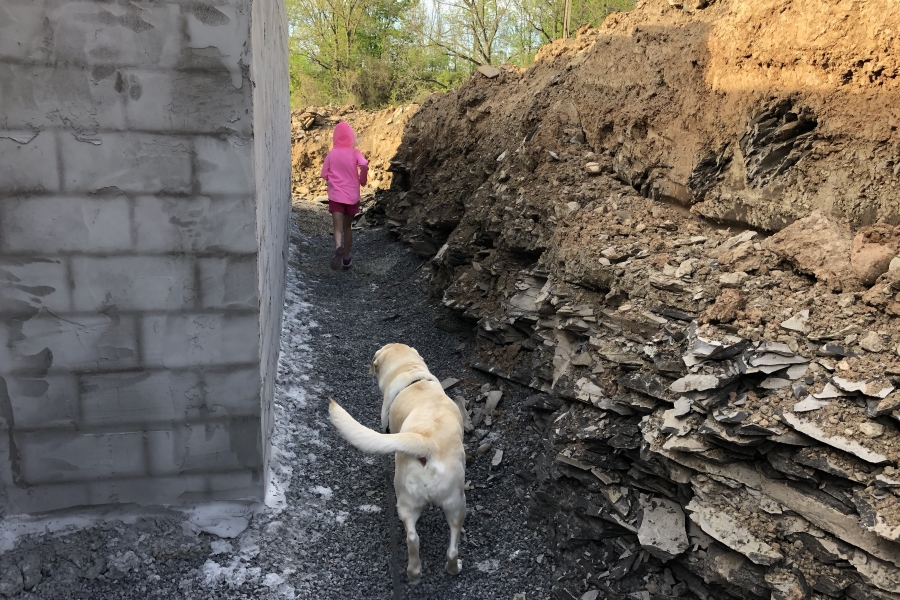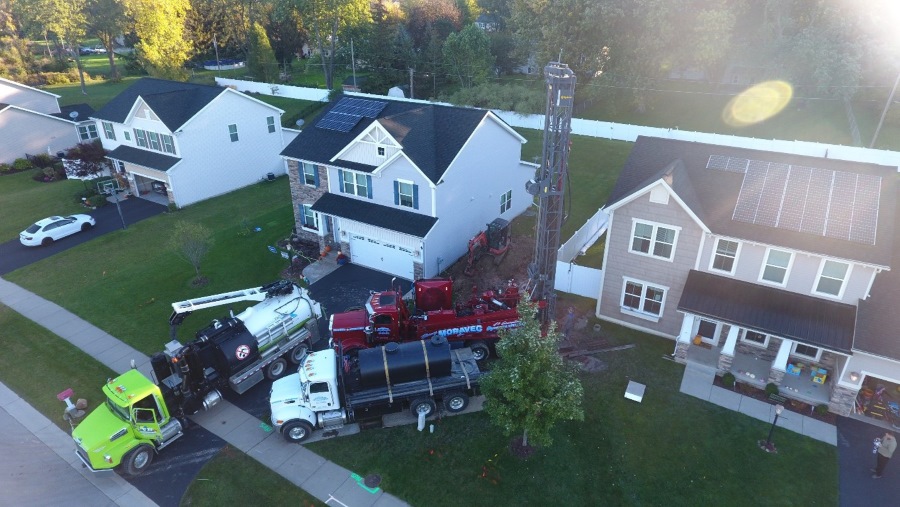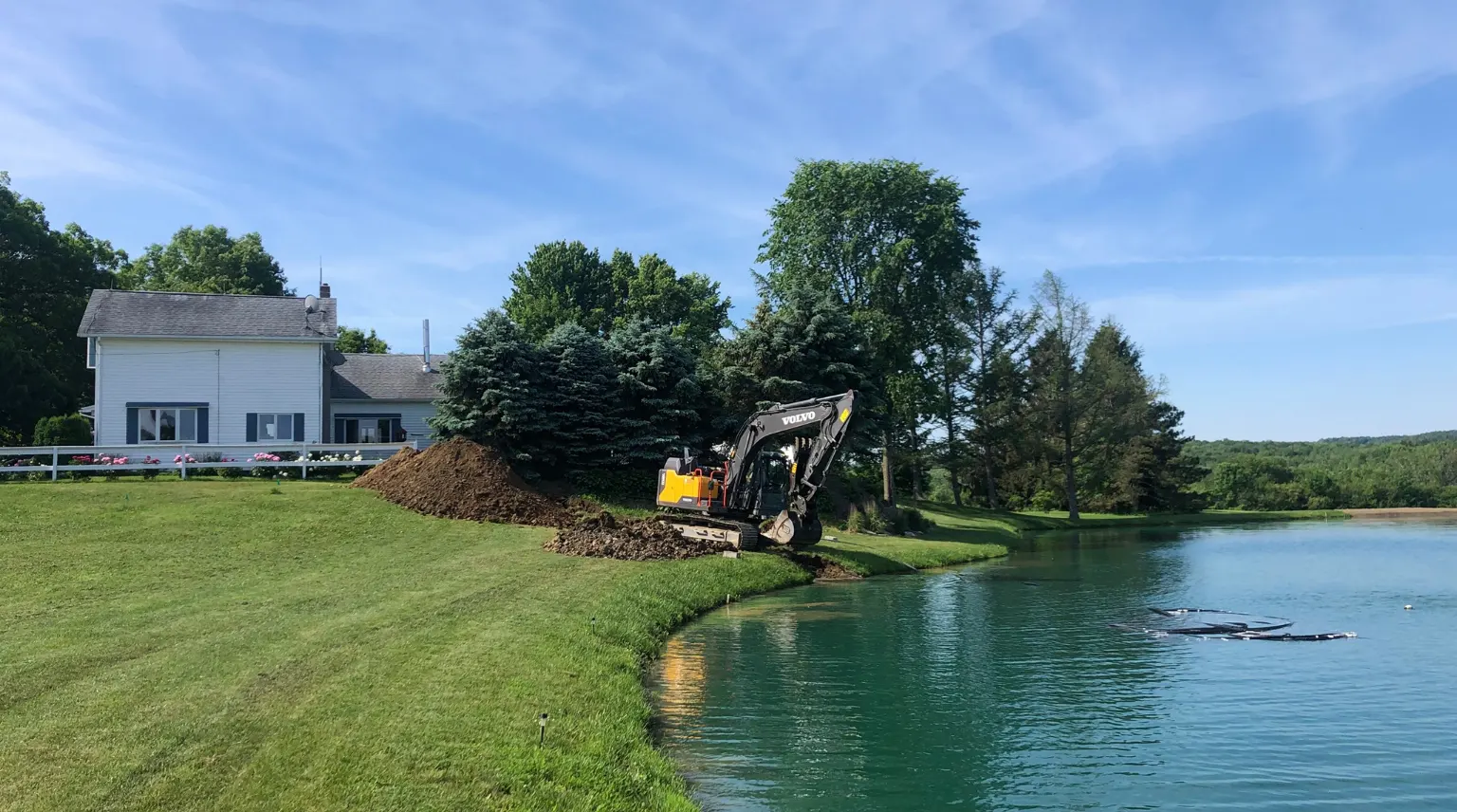Bedrock is solid rock underground that cannot be excavated without special equipment. Hitting unexpected bedrock does impact how to install a geothermal system but does not mean you can’t go geo. If the bedrock is found less than 5 ft under the surface, then a horizontal ground loop is not a good option for geothermal systems in a Northern Climate. The correct depth and length are very important for the performance of a horizontal heat exchanger.

Test holes are a great choice if your area is prone to shallow bedrock, or you are concerned it may be an issue. A hole is dug with a small excavator within the ground loop area to confirm the depth of any bedrock, making sure soil can be dug at the required depth for the system design. Sometimes bedrock is encountered in the proposed ground loop area, however, deeper soil can be found in other areas, preserving the opportunity for a horizontal ground loop.

If bedrock is less than 5’ from the surface, a vertical ground loop becomes the best option. A vertical ground loop requires bedrock to be more than 3 ft from the surface so the bores can be connected and brought into the home at the correct depth.

Extremely shallow bedrock less than 3’ from the surface requires special equipment to obtain the required depths to ensure proper system performance. Depending on the type of bedrock encountered, there are options to dig into the rock and achieve the proper depth. Tools like “rippers” or “hoe rams” can be used to cut into the bedrock for shorter distances. This technique is not viable for large horizontal ground loops, but is great connecting vertical bores together and to the home.







